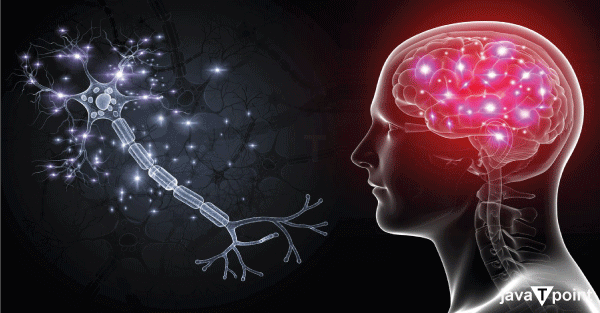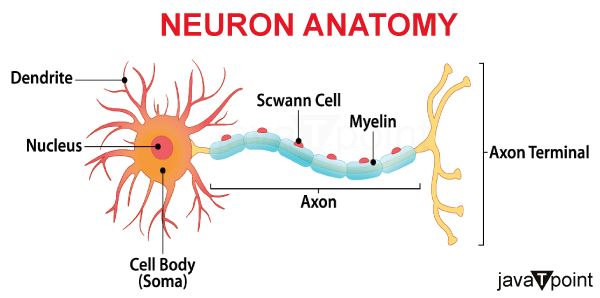Brain NeuronA neuron, or nerve cell in the nervous system, is an electrically excitable cell that shoots electric impulses known as action potentials across a neural network. Synapses are specialized connections that neurons use to interact with other cells. They convey an electric signal from the presynaptic neuron to the target cell over the synaptic gap using small quantities of chemical neurotransmitters. Except for sponges and placozoa, all animals' nervous systems mostly comprise neurons. Plants and fungi, which are not mammals, lack nerve cells. According to how they work, neurons are often divided into three categories. Sensory neurons convey signals to the spinal cord or brain in response to stimuli like touch, sound, or light that influence the cells of the sensory organs. The brain and spinal cord provide impulses to motor neurons, which govern everything from glandular secretion to muscle contraction. Interneurons connect neurons in the same area of the brain or spinal cord. A neural circuit is created when many neurons are functionally coupled.  One axon, dendrites, and the cell body (soma) comprise a normal neuron. Axons and dendrites are filaments that protrude from the soma, which is a tightly packed structure. A few hundred micrometers from the soma, dendrites often branch out widely. In humans, the axon exits the soma at a lump known as the axon hillock and travels up to 1 meter or beyond in other species. Although it divides, its diameter is often constant. Axon terminals, where the neuron may communicate with another cell via a synapse, are located at the tips of the axon's branches that extend the longest. Dendrites or an axon may be absent in neurons. Particularly when the cell is undifferentiated, the word "neurite" is used to designate either an axon or a dendrite.
One axon, dendrites, and the cell body (soma) comprise a normal neuron. Axons and dendrites are filaments that protrude from the soma, which is a tightly packed structure. A few hundred micrometers from the soma, dendrites often branch out widely. In humans, the axon exits the soma at a lump known as the axon hillock and travels up to 1 meter or beyond in other species. Although it divides, its diameter is often constant. Axon terminals, where the neuron may communicate with another cell via a synapse, are located at the tips of the axon's branches that extend the longest. Dendrites or an axon may be absent in neurons. Particularly when the cell is undifferentiated, the word "neurite" is used to designate either an axon or a dendrite.
Most neurons receive signals from their soma and dendrites and then transmit them down their axons. Signals go from one neuron's axon to another's dendrite at most synapses. But synapses may link axons to other axons or dendrites to other dendrites. The process of signaling consists of both chemical and electrical components. Because voltage gradients are maintained across their membranes, neurons are electrically excitable. The neuron produces an action potential, which is an all-or-nothing electrochemical pulse if the voltage changes significantly during a brief period. Rapidly moving up the axon, this potential triggers synaptic connections as it approaches them. The net voltage that reaches the soma may be altered by synaptic impulses that are either excitatory or inhibitory. Neural stem cells typically produce neurons throughout brain development and youth. In the majority of brain regions, neurogenesis stops throughout maturity. Parts of NeuronNeons vary in size, shape, and structure depending on their function and location. A cell body, an axon, and dendrites are the three fundamental components of almost all neurons. 
Cell BodyThe cell body, sometimes called a soma, is the central portion of a neuron. The cell body preserves the structural integrity of the neuron, houses the genetic material, and supplies energy to power operations. A neuron's soma has a nucleus and specialized organelles like other cell bodies do. It is protected and given access to its local environment by a membrane surrounding it. AxonA long, tail-like structure is an axon. The axon hillock, a specialized junction, is where it connects to the cell body. Myelin, a fatty material, insulates many axons. Axons may conduct an electrical signal with the aid of myelin. Typically, neurons only have one major axon. DendritesFibrous roots, known as dendrites, extend out from the cell body. Dendrites, like antennae, pick up and interpret messages sent by the axons of other neurons. Dendritic trees, or many sets of dendrites, are common in neurons. Their function often determines how many they have. For instance, the cerebellum, a brain region, contains Purkinje cells, a unique neuron form. These cells can receive thousands of impulses because of their highly developed dendritic trees. Types of NeuronsThe structure, function, and genetic makeup of neurons differ. There are thousands of various kinds of neurons because there are so many of them, just as there are thousands of different species of living things on Earth. There are five main types of neurons, however. Each incorporates various components of the fundamental neuron form.
Scientists divide neurons into three major groups based on their functions: sensory, motor, and interneurons. Sensory NeuronUsing sensory neurons, you can:
For instance, the soles of your feet are activated when you tread on hot sand. Your brain receives a signal from those neurons alerting you to the heat. Motor NeuronMovement, both voluntary and involuntary, is regulated by motor neurons. These neurons communicate between the brain and spinal cord and the body's muscles, glands, and organs. Lower and upper motor neurons are two different kinds. The spinal cord sends messages to the smooth and skeletal muscles via lower motor neurons. Between your brain and spinal cord, upper motor neurons convey impulses. Lower motor neurons in your spinal cord, for instance, signal the smooth muscles of your esophagus, stomach, and intestines when you eat. When these muscles flex, food may pass through your digestive system. InterneuronsYou may find interneurons, neuronal bridges, in your brain and spinal cord. The majority of neurons are of this kind. Motor neurons and other interneurons transmit signals from sensory neurons and other interneurons. They often create intricate circuits that facilitate your response to outside inputs. For instance, sensory neurons in your fingers may alert interneurons in your spinal cord when you contact something pointy like a cactus. You can move your hand aside by sending the signal to the motor neurons in your hand via certain interneurons. You feel pain when other interneurons in your brain send a message to the pain center. How do Neurons Work?Using action potentials, neurons communicate. The movement of charged particles in and out of the neuron's membrane results in a change in the potential electric energy of the neuron, known as an action potential. An action potential travels down the axon to a presynaptic terminal upon generation. Action potentials may activate both electrical and chemical synapses. Neurons may communicate electrically and chemically with one another at synapses. A postsynaptic ending, a synaptic cleft, and a presynaptic ending form a synapse. Chemical SynapseNeurotransmitters are chemical messengers released by the neuron at a chemical synapse. These chemicals enter the synaptic cleft and attach to receptors on the dendrite's postsynaptic end. The postsynaptic neuron may react to neurotransmitters by producing an independent action potential. Alternately, they may stop postsynaptic neuron activation. The postsynaptic neuron doesn't produce an action potential in the situation. Electrical SynapseElectrical synapses are only excitatory. These synapses develop when a gap junction joins two neurons. Ion channels are present in this gap, which is considerably smaller than a chemical synapse and aids in transmitting a strong electrical signal. Electrical synapses allow for transmitting impulses considerably more quickly than chemical ones. These impulses, however, may deteriorate from one neuron to the next. They are less effective in sending repeated messages as a result.
Next TopicBrain Surgery
|
 For Videos Join Our Youtube Channel: Join Now
For Videos Join Our Youtube Channel: Join Now
Feedback
- Send your Feedback to [email protected]
Help Others, Please Share









